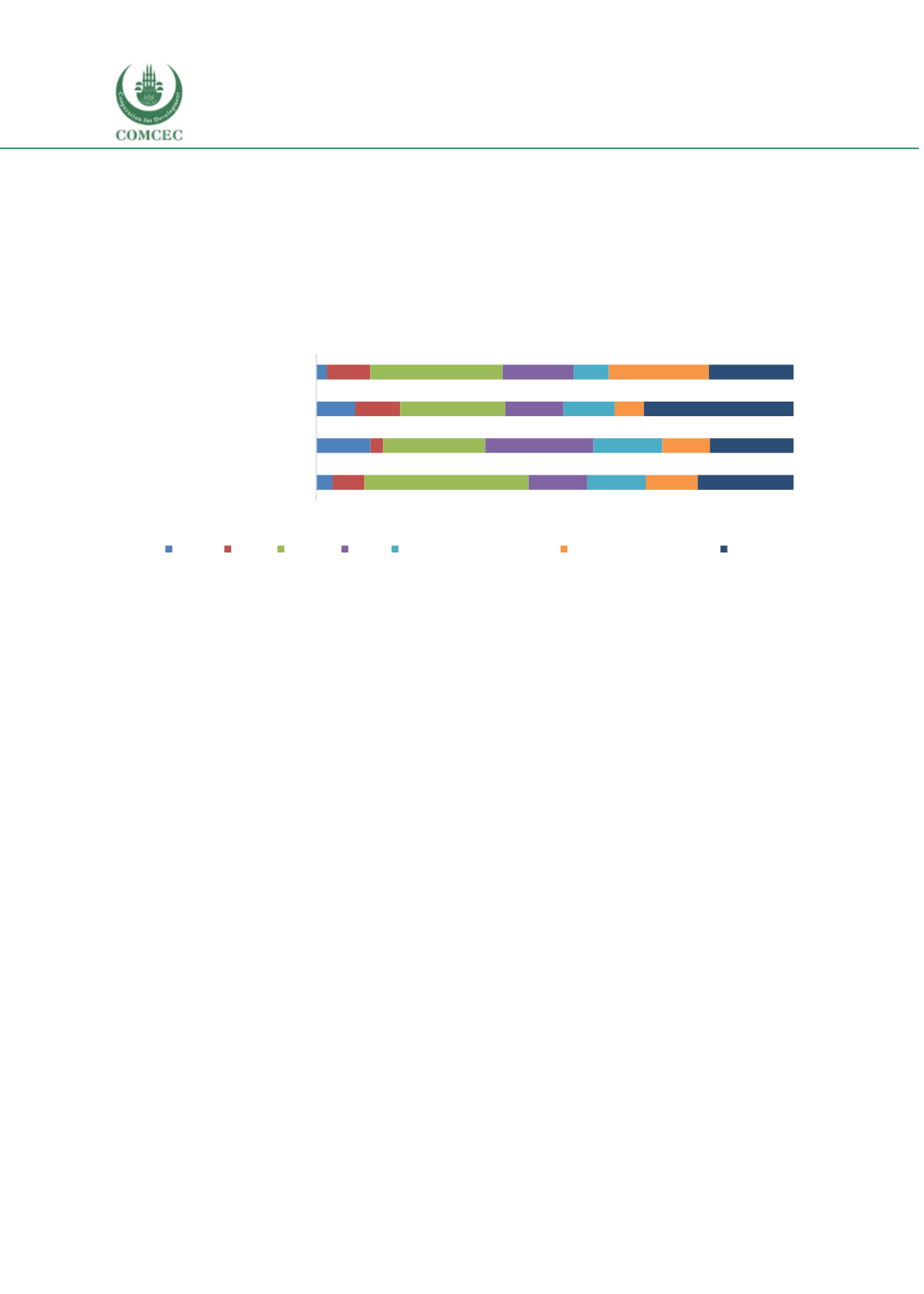

Education of Disadvantaged Children in OIC:
The Key to Escape from Poverty
102
been examined. Shapley decomposition results show that for Turkey in 2013, the main
contributors to the remaining inequalities are language spoken at home, wealth, region and
number of children in the household (higher than 20 percent only for attendance for 6-11 year
olds). Language is the factor that contributes the most to inequality of opportunity for all four
education indicators. Region, language and wealth taken together make up more than 60 percent
of inequality of opportunities.
Figure 39 Shapley decomposition for 2013, Turkey
Source: Authors’ calculations using DHS 2013
Regression results show that circumstances in general do not have a significant impact on
education opportunities for children in Turkey, at least in terms of access.
Finishing 5 years
of education is achieved the most equally as it does not seem to be affected by any circumstance
(as of 2013). For other education opportunities, the negative effect of being poor seems to have
decreased over time but it has not disappeared altogether. Especially for finishing 8 years of
education, living in a household in the 1
st
quintile (the poorest) is still at a major disadvantage
(decreasing the likelihood of finishing 8 years of education by 26 percent). Inequalities regarding
gender and language spoken at home also decreased from 2003 to 2013 and their negative
marginal effect is at most 5.9 percent. Detailed interpretation of the DHS analysis for each
indicator is displayed in the Annex 3, yet the overall picture can be summarised as follows
:
Our DHS analysis that controls for the effect of various circumstances at the same time reveals
that location, in terms of living in an urban or rural setting, does not cause a gap in access to
education. Similarly, regression results do not imply any significant disparities in educational
opportunities across regions (when controlling for other circumstances). Regressions show that
disadvantages related to gender (being a girl) decreased over the years. Being a girl was found to
create the largest negative effect for finishing 8 years of education in 2013 at 5.9 percent. The
negative impact of being poor and having a household head with no or low education either
decreased or disappeared for education indicators. Yet living in the poorest quintile (compared
to living in the richest quintile) continues to decrease the likelihood of attendance in school for
younger and older children and finishing 8 years of education. The chances of attending school
for children in the 6-11 age bracket decreases in crowded households where the number of
children exceeds 5. Speaking a language other than Turkish in the household has a much smaller
3,4
11,4
8,2
2,2
6,7
2,7
9,4
9,1
34,4
21,4
22,0
27,7
12,3
22,7
12,2
14,9
12,3
14,4
10,7
7,3
10,9
10,0
6,1
21,0
20,1
17,6
31,4
17,8
0
10 20 30 40 50 60 70 80 90 100
Finishing 8 years of education
Finishing 5 years of education
Attendance 12-15 year olds
Attendance 6-11 year olds
location gender language region household head's education # of children in household wealth
















